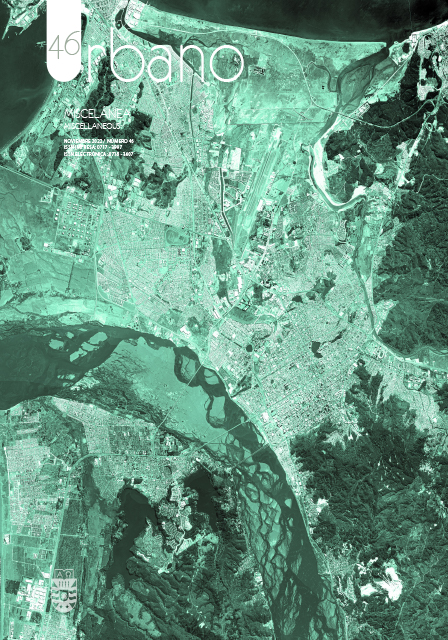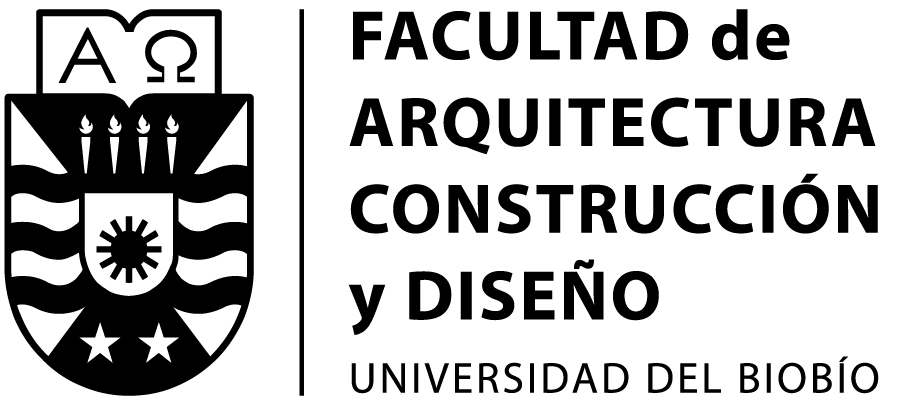Análisis de componentes principales de la morfología urbano edilicia del Área Metropolitana de Mendoza, Argentina
DOI:
https://doi.org/10.22320/07183607.2022.25.46.09Palabras clave:
morfología urbano-edilicia, análisis de componentes principales, desarrollo urbano sostenibleResumen
Las ciudades insertas en zonas áridas afrontan una serie riesgos que amenazan su sostenibilidad, al ser impactadas por los efectos del cambio climático y la urbanización, y consecuente inequidad de consumos y agotamiento de los recursos naturales. Existen muchas variables que determinan la forma urbano-edilicia, las que a su vez influyen en el consumo de energía en las ciudades. Por ello, el objetivo de este trabajo es condensar la información aportada por las variables morfológicas urbano-edilicias en solo algunas variables o combinaciones de ellas para las manzanas urbanas ubicadas en los seis departamentos del Área Metropolitana de Mendoza (AMM). Metodológicamente, se computaron datos cuantitativos de la distribución espacial de las variables urbano-edilicias, se calcularon sus correlaciones y se aplicó un análisis de Componentes Principales para sintetizar la cantidad de variables. Los resultados identifican como principales variables de la primera componente principal -en cinco de los seis departamentos del AMM- a la densidad edilicia, la separación edilicia y el Índice de Vegetación de Diferencia Normalizada (NDVI); las dos primeras relacionadas al ambiente construido y la tercera, a la vegetación. Al incorporar datos del arbolado urbano disponibles solo para el departamento de Capital, los resultados incluyen las variables magnitud, completamiento y trasmisividad del arbolado, junto a las ya identificadas en las primeras tres componentes. Los hallazgos del trabajo brindan información sobre las variables urbano-edilicias representativas de la ciudad oasis que permitirán a futuro establecer prioridades de intervención considerando un número reducido de variables sintéticas, a fin de proponer estrategias de eficiencia y generación energética.
Descargas
Citas
AL-SAAIDY, H. (2020). Urban Morphological Studies (Concepts, Techniques, and Methods). Journal of Engineering, 26(8), 100-111. DOI: https://doi.org/10.31026/j.eng.2020.08.08
ARTMANN, M., KOHLER, M., MEINEL, G., GAN, J. Y IOJA, I. C. (2019). How smart growth and green infrastructure can mutually support each other. A conceptual framework for compact and green cities. Ecological Indicators, 96, 10-22. DOI: https://doi.org/10.1016/j.ecolind.2017.07.001
BERNABEU, M., NAVARRETE, M. Y ÁVILA, A. (2019). La ciudad como objeto de investigación: un recorrido por los estudios urbanos sobre el Área Metropolitana de Mendoza. Boletín de Estudios Geográficos, (112), 47-81. Recuperado de https://revistas.uncu.edu.ar/ojs/index.php/beg/article/view/3392
BIBRI, S. (2021). Data-driven smart sustainable cities of the future: An evidence synthesis approach to a comprehensive state-of-the-art literature review. Sustainable Futures, 3, 100047. DOI: https://doi.org/10.1016/j.sftr.2021.100047
BILJECKI, F. Y CHOW, Y. (2022). Global Building Morphology Indicators. Computers, Environment and Urban Systems, 95, 101809. DOI: https://doi.org/10.1016/j.compenvurbsys.2022.101809
BOEING, G. (2021). Spatial information and the legibility of urban form: Big data in urban morphology. International Journal of Information Management, 56. DOI: https://doi.org/10.1016/j.ijinfomgt.2019.09.009
BÓRMIDA, E. (2014). Mendoza, una ciudad oasis. Revista de la Universidad de Mendoza, (4/5), 131-137. Recuperado de: https://www.um.edu.ar/ojs2019/index.php/RUM/article/view/189
BÓRMIDA, E. Y DABUL, N. (2014). Mendoza: Ensayo sobre morfología, historia e identidad urbanas. Revista de la Universidad de Mendoza, 8(9), 147-164. Recuperado de: https://www.um.edu.ar/ojs2019/index.php/RUM/article/view/151
BURTON, E., JENKS, M. Y WILLIAMS, K. (2013). Achieving sustainable urban form. Routledge.
CHEN, F. (2021). Urban Morphology and Citizens’ Life. En: Maggino F. (Ed.), Encyclopedia of Quality of Life and Well-Being Research (pp.1-6). Springer, Cham. DOI: https://doi.org/10.1007/978-3-319-69909-7_4080-2
CHEN, H-C., HAN, Q. Y DE VRIES, B. (2020). Urban morphology indicator analyzes for urban energy modeling. Sustainable Cities and Society, 52, 101863. DOI: https://doi.org/10.1016/j.scs.2019.101863
DIRECCIÓN GENERAL DE CATASTRO (s.f.). Recuperado de: https://www.atm.mendoza.gov.ar/portalatm/zoneTop/catastro/catastro.jsp
GANEM C., BALTER, J. Y ALCHAPAR, N. (2021). Impact of Local Urban Climate on Building Energy Performance: Case Studies in Mendoza, Argentina. En Urban Microclimate Modelling for Comfort and Energy Studies (pp. 465-484). Springer, Cham. DOI: https://doi.org/10.1007/978-3-030-65421-4_22
GRAFIUS, D., CORSTANJE, R. Y HARRIS, J. (2018). Linking ecosystem services, urban form and green space configuration using multivariate landscape metric analysis. Landscape ecology, 33(4), 557-573. DOI: https://doi.org/10.1007/s10980-018-0618-z
GRAY DE CERDÁN, N. (2005). Repensando el Gran Mendoza. Estrategias de desarrollo urbano. Mendoza: EDIUNC.
GUDIÑO, M. (2018). Regulación del mercado para conservar suelo agrícola. Interfaz urbano-rural, zona metropolitana de Mendoza, Argentina. Revista de la Facultad de Ciencias Agrarias UNCuyo, 50(2), 155–172. Recuperado de https://revistas.uncu.edu.ar/ojs3/index.php/RFCA/article/view/2953
INFRAESTRUCTURA DATOS ESPACIALES MENDOZA [IDE] (s.f.). Recuperado de https://www.mendoza.gov.ar/idem/
JABAREEN, Y. (2006). Sustainable urban forms: Their typologies, models, and concepts. Journal of planning education and research, 26(1), 38-52. DOI: https://doi.org/10.1177/0739456X05285119
JENKS, M., KOZAK, D. Y TAKKANON, P. (2013). World cities and urban form: Fragmented, polycentric, sustainable? London: Routledge. DOI: https://doi.org/10.4324/9781315811871
JOHNSON, R. Y WICHERN, D. (1998). Applied multivariate statistical analysis. 4th Ed. USA: Prentice Hall.
JOLLIFFE, I. (2002). Principal component analysis. New York: Springer.
KAISER, H. (1960). The application of electronic computers to factor analysis. Educational and Psychological Measurement, 20, 141–151. DOI: http://dx.doi.org/10.1177/001316446002000116
LEMOINE-RODRÍGUEZ, R., INOSTROZA, L. Y ZEPP, H. (2020). The global homogenization of urban form. An assessment of 194 cities across time. Landscape and Urban Planning, 204, 103949. DOI: https://doi.org/10.1016/j.landurbplan.2020.103949
MAIULLARI, D., ESCH, M. Y TIMMEREN, A. (2021). A Quantitative Morphological Method for Mapping Local Climate Types. Urban Planning, 6(3), 240–257. DOI: https://doi.org/10.17645/up.v6i3.4223
MESA, N. Y DE ROSA, C. (2001). La incidencia de las variables morfológicas, sobre la eficiencia energética de la edilicia urbana en el área metropolitana de Mendoza. Avances en Energías Renovables y Medio Ambiente, 5, 37-42. Recuperado de http://sedici.unlp.edu.ar/handle/10915/79776?show=full
MESA, N., ARBOIT, M. HERRERA, M. Y DE ROSA, C. (2010, 1-5 noviembre). La eficiencia energética de la alta densidad edilicia en ciudades de trama ortogonal. En IV Conferencia Latino Americana de Energía Solar (IV ISES- CLA) y XVII Simposio Peruano de Energía Solar (XVII- SPES). Cusco, Perú. Recuperado de https://www.yumpu.com/es/document/read/32232800/la-eficiencia-energetica-de-la-alta-densidad-edilicia-en-ciudades-de-
MOLINA, G., ARBOIT, M., MAGLIONE, D., SEDEVICH, A. Y MUTANI, G. (2020). Estudio de expansión urbana, crecimiento poblacional, consumos energéticos e índices de vegetación en el Área Metropolitana de Mendoza. ÁREA, 26(1), 1-21. Recuperado de https://area.fadu.uba.ar/area-2601/molina-et-al/
MUNICIPALIDAD DE CAPITAL (s.f.). Recuperado de http://www.ciudaddemendoza.gov.ar
MUTANI, G., FONTANIVE, M. Y ARBOIT, M. (2018). Energy-use modelling for residential buildings in the metropolitan area of Gran Mendoza (AR). Italian Journal of Engineering Science: Tecnica Italiana, 61(2), 74-82. Recuperado de http://iieta.org/sites/default/files/Journals/TI-IJES/61+1.02_04.pdf
NACIONES UNIDAS (s.f.). Recuperado de https://unhabitat.org/about-us
NOWAK, D. Y GREENFIELD, E. (2018). US urban forest statistics, values, and projections. Journal of Forestry, 116(2), 164-177. DOI: https://doi.org/10.1093/jofore/fvx004
OKE, T. (1988). The urban energy balance. Progress in Physical Geography: Earth and Environment, 12, 471 508. DOI: https://doi.org/10.1177/030913338801200401
OWENS, S. (1986). Energy, planning and urban form. London: Pion Ltd.
PASTOR, G., MARCHIONNI, F. Y TORRES, L. (2020). Paisajes y fronteras de ruralidades metropolitanas de Mendoza, Argentina. Andamios, 17(44), 227-245. DOI: https://doi.org/10.29092/uacm.v17i44.799
PONTE, R. (2008). Mendoza, aquella ciudad de barro. Historia de una ciudad andina, desde el siglo XVI hasta nuestros días. Buenos Aires: CONICET de Argentina e Imprenta Unión.
QUAN, S. Y LI, C. (2021). Urban form and building energy use: A systematic review of measures, mechanisms, and methodologies. Renewable and Sustainable Energy Reviews, 139, 110662. DOI: https://doi.org/10.1016/j.rser.2020.110662
SHARIFI, A. (2021). Urban sustainability assessment: An overview and bibliometric analysis. Ecological Indicators, 121, 107102. DOI: https://doi.org/10.1016/j.ecolind.2020.107102
UNITED STATES GEOLOGICAL SURVEY [USGS] (s/f). Earthesplorer. Recuperado de: https://earthexplorer.usgs.gov/
WU, C., PENG, N., MA, X., LI, S. Y RAO, J. (2020). Assessing multiscale visual appearance characteristics of neighbourhoods using geographically weighted principal component analysis in Shenzhen, China. Computers, Environment and Urban Systems, 84, 101547. DOI: https://doi.org/10.1016/j.compenvurbsys.2020.101547
Descargas
Publicado
Cómo citar
Número
Sección
Licencia
Derechos de autor 2022 Mariela Edith Arboit, Dora Silvia Maglione

Esta obra está bajo una licencia internacional Creative Commons Atribución-CompartirIgual 4.0.
El contenido de los artículos y reseñas que se publican en cada número de Urbano, es responsabilidad exclusiva de los autores y no representan necesariamente el pensamiento ni comprometen la opinión de la Universidad del Bío-Bío.
Las/os autoras/es conservarán sus derechos de autor, sin embargo, garantizarán a la revista el derecho de primera publicación y difusión de su obra. La publicación del artículo en Urbano estará sujeta a la Licencia de Reconocimiento de Creative Commons CC BY-SA que permite a otros compartir-copiar, transformar o crear nuevo material a partir de esta obra para cualquier propósito, incluso comercialmente, siempre y cuando se reconozcan la autoría y la primera publicación en esta revista, y sus nuevas creaciones estén bajo una licencia con los mismos términos.![]()























